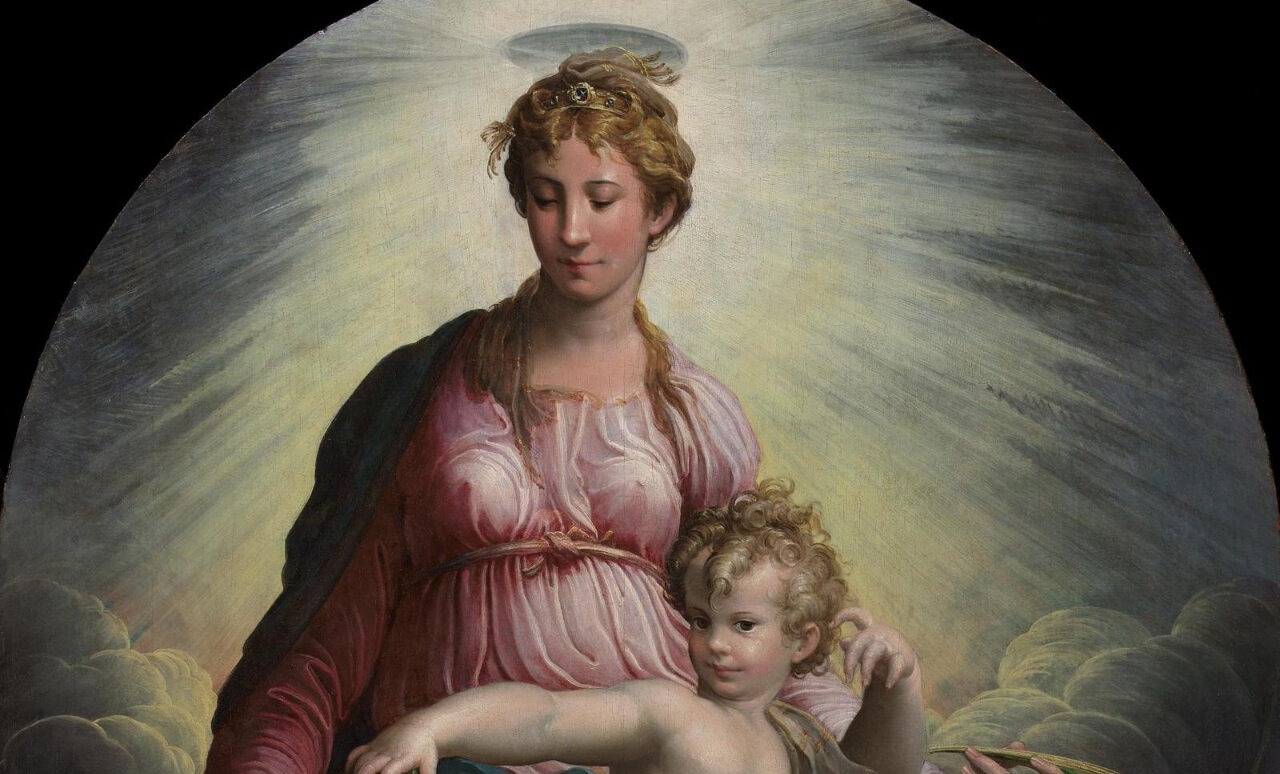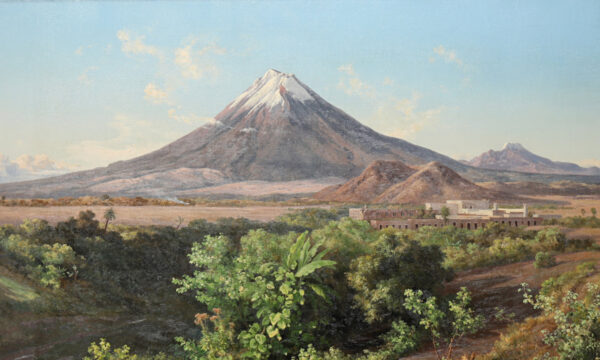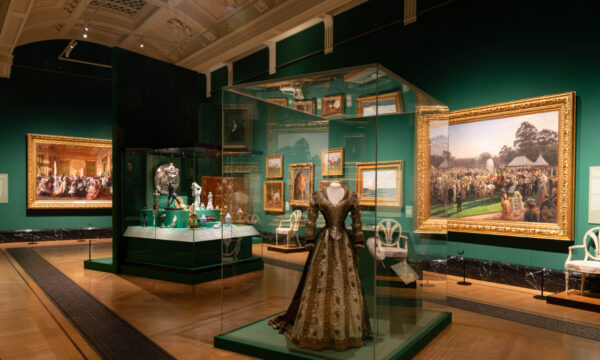Parmigianino: The Vision of Saint Jerome at the National Gallery

Born in the Northern Italian city of Parma in 1503, Girolamo Francesco Maria Mazzola came to be known as Parmigianino, meaning “the little one from Parma”. Compared to Raphael as a precocious giftedly young man, the artist’s huge talent was always at odds with his nickname. Tragically he too was fated to die at the age of 37. Over the last decade, the National Gallery has been restoring Parmigianino’s magnificent Mannerist altarpiece, The Vision of Saint Jerome. Now, as part of the Trafalgar Square institution’s bicentennial celebrations, the end result is unleashed within a frame especially crafted to provide a sense of the painting’s original 16th-century church location.
Displayed in room 46 of the National Gallery – the setting for some memorable small shows in recent times like Hockney and Piero – the exhibition sets out to explore the creative process behind Parmigianino’s The Vision of Saint Jerome (1526-27) also known as The Madonna and Child with Saints. The work was intended for a chapel in the church of San Salvatore in Lauro belonging to the Caccialupi family. Unfortunately, the artist would never see its installation after he took the decision to flee following the sacking of Rome in 1527. The painting was hidden away for its own protection, only to re-emerge when the patron’s heirs transferred it to their family church in Città di Castello, central Italy. By then, Parmigianino was long since dead. Many years later, the British National Gallery would acquire the three-and-a-half metre work in 1826, two years after the institution’s opening.
Painted in the years of the Mannerist period, the masterpiece finds the Parmese artist breaking with earlier Renaissance doctrine and exploring a more stylised mode of representation. His interest in the aesthetic potential of anatomical distortion is attested to by his later Florentine work of 1535-40, Madonna with the Long Neck (not on show at the National Gallery) and the remarkable Self–Portrait in a Convex Mirror he produced at 21, an image of which features at the start of the current exhibition. In the lower half of the Vision of Saint Jerome, a musclebound John the Baptist, draped in an animal skin and wielding a long cross uses an unnaturally elongated right arm and outstretched finger to direct the gaze upwards to the presence of the Christ child behind. Parmigianino is conceivably referring to the Baptist’s “Behold the Lamb of God” quotation in the biblical gospel of St John. The Virgin Mary, adorned in rose pink and bathing in a celestial light amongst dark clouds, has a distinctly statuesque quality whilst the infant Jesus has been imbued with a self-possession and mischievousness bordering on impudence. Saint Jerome lies fast asleep on the ground behind John the Baptist, potentially experiencing the scene before us as a vision. Beside him are a red cardinal hat and human skull added comparatively late by Parmigianino to identify the ageing priest. The general consensus is that the conservation of the painting has proved a huge success. Layers of old varnish have been removed along with retouching, thus highlighting the quality of the artist’s brushwork and vibrant colour palette. The lush greens and reds have a special energy to them.
The altarpiece was Parmigianino’s first big commission after he relocated to Rome at the age of 21 where he mightily impressed Pope Clement VII. According to the historian Giorgio Visari, when the ancient city was sacked in 1527 by the mutinous troops of the Holy Roman emperor, Charles V, the soldiers entered his studio hell-bent on plunder only to be mesmerised and subdued by the sheer quality of his work. During the curatorial tour, much attention was given to the pivotal role that drawing played in the artist’s practice. The painting, being the focal point, is surrounded by wonderfully adroit, sensitive and searching drawings. Unusually for his time, Parmigianino did not limit himself to one method.
A consummate and inventive draughtsman of the highest order, he is found here using pen and brown wash with white heightening to arrange the reclining Jerome’s body. This study on light blue paper, entitled, Study for Saint Jerome (1526) sees the artist placing the sleeping saint’s body in a serpentine twist through the head, hips, knees and feet, perhaps influenced by the exaggerated musculature of Michelangelo’s male figures in the Sistine chapel. Another pen and ink study, Study for a Composition of the Virgin and Christ Child with Saint John the Baptist and Saint Jerome (1526) is believed to be the sole preparatory study of the entire composition still in existence. An early attempt to solve challenges, it offers a more conventional solution, placing the Virgin and Christ child above and John the Baptist alongside Jerome beneath. It was deemed to be unsatisfactory having necessitated that the saints be diminished in scale to accommodate them in the narrow panel.
There is rich evidence throughout the exhibition of the dynamism and fluidity of Parmigianino’s drawing. Apparently, the act of drawing was something of an obsession for him. There are chalk studies in the current show displaying equal facility. Studies of Saints John the Baptist and Jerome, a Crucifix and Various Heads from around 1526, rendered in red chalk on paper depicts Jerome reclining but awake. The artist deploys cross-hatching and subtle usage of shadow. Aside from the central characters, Parmigianino loosely sketches some incongruous extra figures, seemingly for his own amusement.
The National Gallery has assembled a small but perfectly formed exhibition, which serves to showcase both the tremendous talent of this Mannerist master and his ability to assimilate the styles of Michelangelo and Raphael in Rome as well as ancient sculpture. Parmigianino’s superb draughtsmanship really comes to the fore as a veil is lifted to reveal the creative process that shaped the design and ultimate execution of one of this visionary artist’s masterpieces, The Vision of Saint Jerome.
James White
Image: Detail from Parmigianino, The Madonna and Child with Saints, 1526-7, courtesy of National Gallery
Parmigianino: The Vision of Saint Jerome is at the National Gallery from 5th December 2024 until 9th March 2025. For further information or to book visit the exhibition’s website here.
























Facebook
Twitter
Instagram
YouTube
RSS